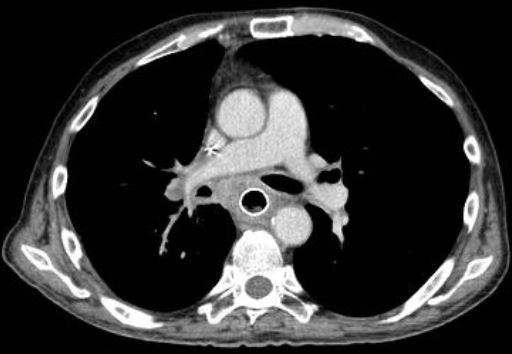Tratamiento temporal con prótesis autoexpandible en patología intestinal alta.
Palabras clave:
prótesis autoexpandible, poster, seram, atología intestinal altaResumen
Objetivos Docentes
-Describir los tipos de prótesis.
-Enumerar las indicaciones.
-Destacar el papel del radiólogo en el manejo de los pacientes con prótesis autoexpandibles.
-Ilustrar las posibles complicaciones.
Revisión del tema
INTRODUCCIÓN.
Las endoprotesis o stents en el tracto digestivo alto son un tratamiento minimamente invesivo que se ha desarrollado en los últimos años. Historicamente, se han utilizado como tratamiento paliativo de la disfagia maligna. Con la introducción de los nuevos modelos su uso se ha extendido para el manejo de otras patologías.
Actualmente su indicación principal sigue siendo el tratamiento paliativo de estenosis luminales neoplásicas, particularmente el cáncer de esófago. El cáncer de esófago habitualmente es diagnosticado en un estado avanzado y los pacientes solo pueden ser candidatos a tratamiento paliativo.
Descargas
Citas
Bethge N, Sommer A, Vakil N. A prospective trial of self-expanding metal stents in the palliation of malignant esophageal strictures near the upper esophageal sphincter. Gastrointest Endosc 1997; 45:300.
Bethge N, Sommer A, Vakil N. Palliation of malignant esophageal obstruction due to intrinsic and extrinsic lesions with expandable metal stents. Am J Gastroenterol 1998; 93:1829.
Sharma P, Kozarek R, Practice Parameters Committee of American College of Gastroenterology. Role of esophageal stents in benign and malignant diseases. Am J
Gastroenterol 2010; 105:258.
Park JY, Shin JH, Song HY, et al. Airway complications after covered stent placement for malignant esophageal stricture: special reference to radiation therapy. AJR Am J Roentgenol 2012; 198:453.
Gelbmann CM, Ratiu NL, Rath HC, et al. Use of self-expandable plastic stents for the treatment of esophageal perforations and symptomatic anastomotic leaks. Endoscopy 2004; 36:695.
Hünerbein M, Stroszczynski C, Moesta KT, Schlag PM. Treatment of thoracic anastomotic leaks after esophagectomy with self-expanding plastic stents. Ann Surg 2004; 240:801.
Battersby NJ, Bonney GK, Subar D, et al. Outcomes following oesophageal stent insertion for palliation of malignant strictures: A large single centre series. J Surg Oncol 2012; 105:60.
Rozanes I, Poyanli A, Acunas B. Palliative treatment of inoperable malignant esophageal strictures with metal stents: one center's experience with four different stents. Eur J Radiol 2002; 43:196.
Winkelbauer FW, Schöfl R, Niederle B, et al. Palliative treatment of obstructing esophageal cancer with nitinol stents: value, safety, and long-term results. AJR Am J Roentgenol 1996; 166:79.
Acunas B, Rozanes I, Akpinar S, et al. Palliation of malignant esophageal strictures with self-expanding nitinol stents: drawbacks and complications. Radiology 1996; 199:648.
Stivaros SM, Williams LR, Senger C, et al. Woven polydioxanone biodegradable stents: a new treatment option for benign and malignant oesophageal strictures. Eur Radiol 2010; 20:1069.
Goenka MK, Goenka U. Endotherapy of leaks and fistula.World J Gastrointest Endosc. 2015 Jun 25;7(7):702-13.
Willingham FF, Buscaglia JM. Endoscopic Management of Gastrointestinal Leaks and Fistulae. Clin Gastroenterol Hepatol. 2015 Oct;13(10):1714-21.
Roy-Choudhury SH1, Nicholson AA, Wedgwood KR, et al. Symptomatic malignant gastroesophageal anastomotic leak: management with covered metallic esophageal stentsAJR Am J Roentgenol. 2001 Jan;176(1):161-5.


